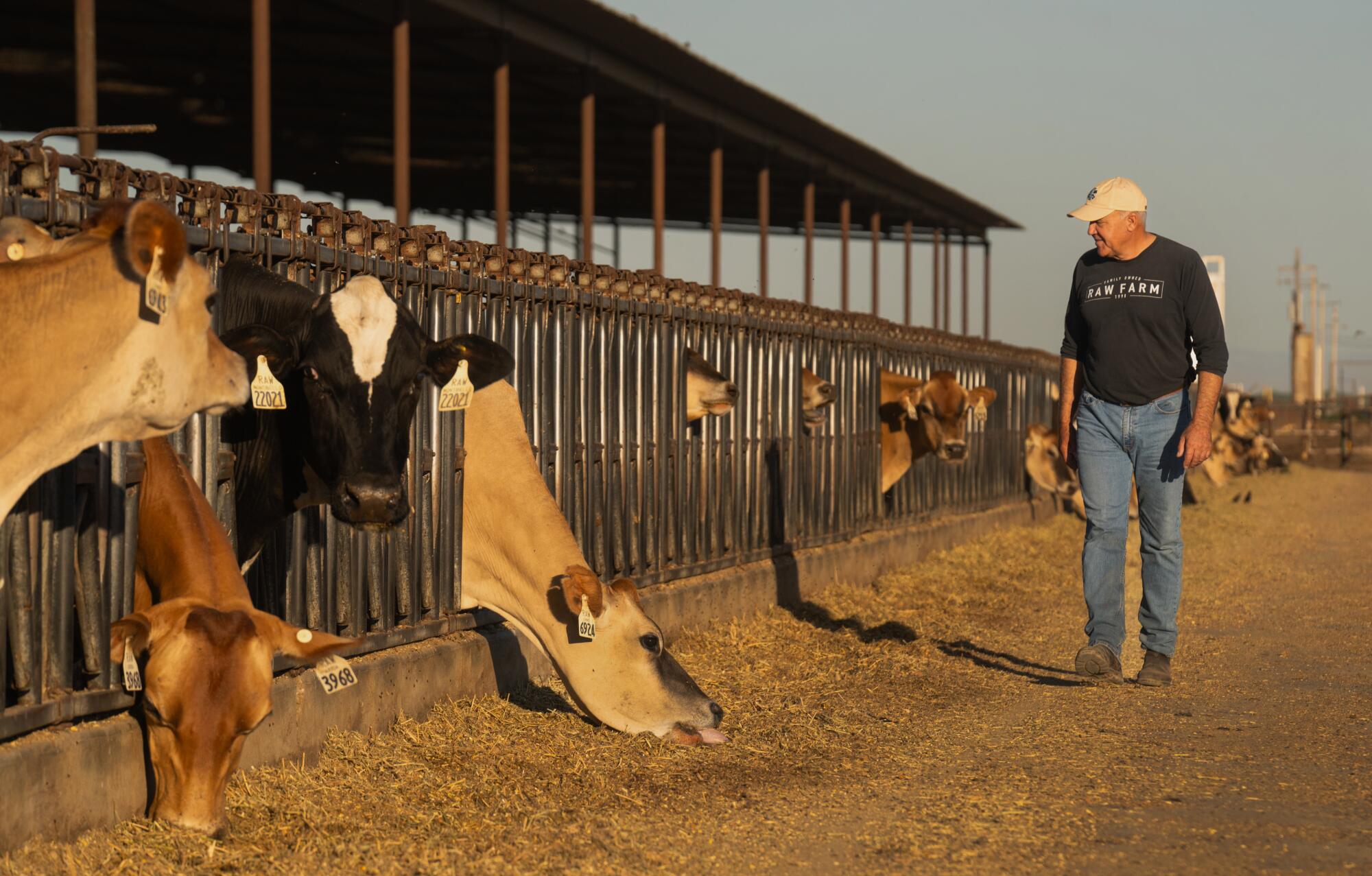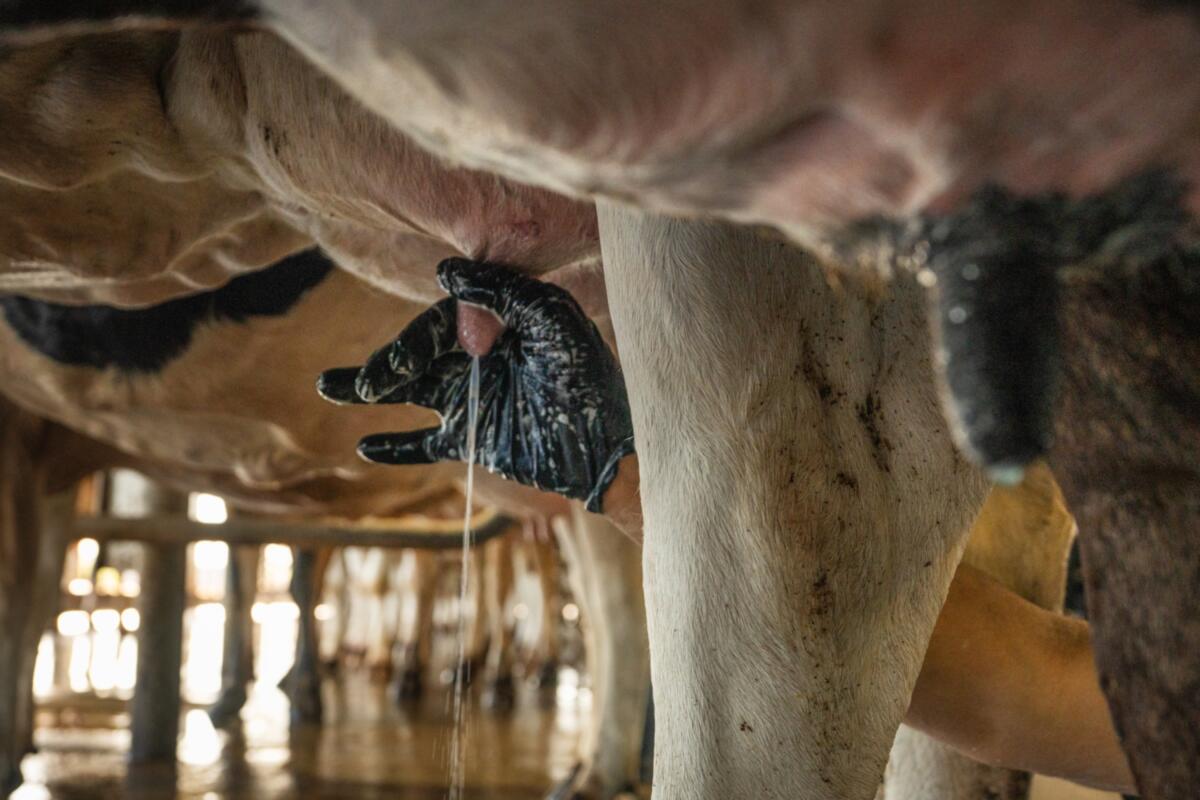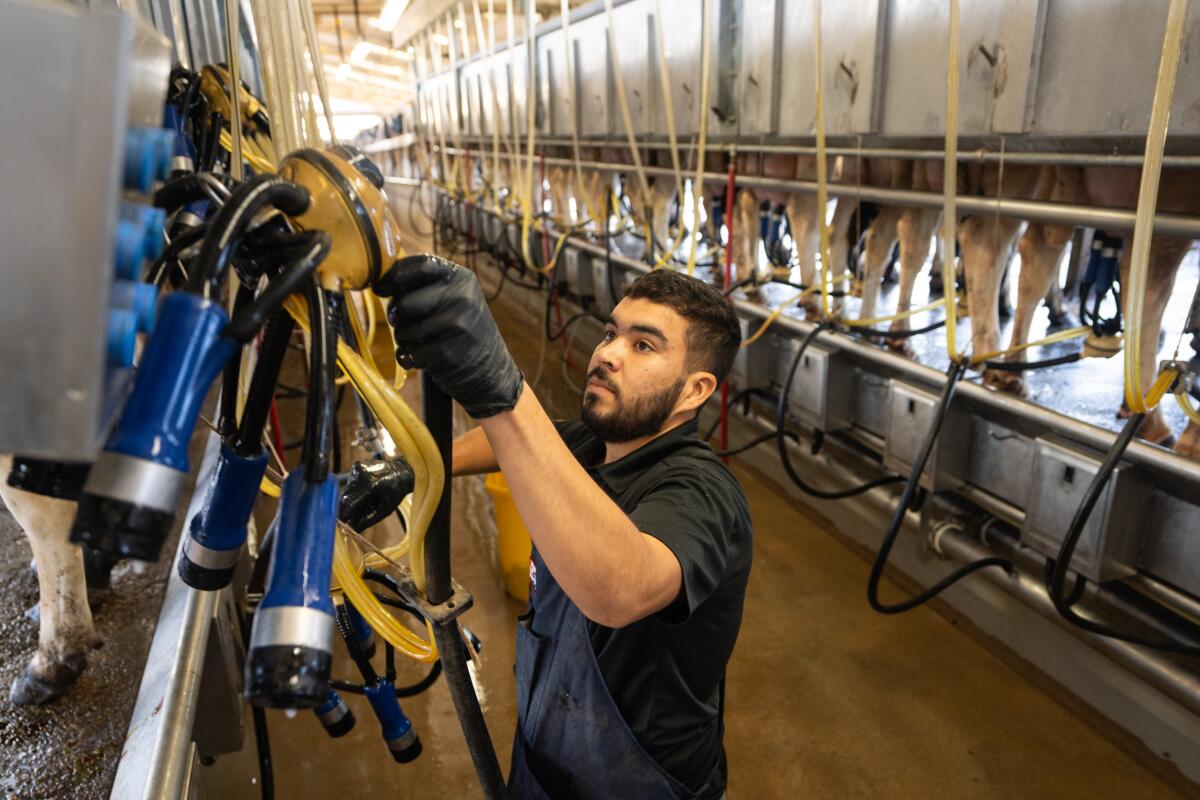So far, the virus has caused only minimal illness in humans, but has spread rapidly among birds, marine mammals and other species with devastating effects.
Although U.S. health officials have repeatedly assured Americans that H5N1 bird flu poses little risk to their well-being, some experts have criticized what they see as the government’s failure to strictly control the spread of the virus among cattle and other farm animals. The virus has been reported in 145 dairy herds in 12 states, but critics say that is likely an underestimate.
They refer to stories they have heard from doctors and veterinarians in farming communities about mysterious and hidden illnesses. And they point to surprising “hits” of H5N1 in municipal wastewater far removed from any infected dairy herds.
“I think our government officials are not doing the rigorous research that they should be doing,” said Rick Bright, a virologist and former head of the U.S. Office of Biomedical Advanced Research and Development. “I think they are constantly downplaying this outbreak and this virus.”
Some experts are concerned that farm animals infected with H5N1 could serve as “mixed strains” of new strains of the virus that could more easily infect humans. The study was published this week. shows that the virus has receptors for both birds and humans. and they celebrate Up to 75 percent of human infectious diseases. of pathogens of animal origin.
Now, amid this heated debate over virus monitoring, a raw milk producer and longtime critic of the Food and Drug Administration has accused the government of ignoring his advice about a possible H5N1 outbreak among dairy cows in early May.
The cows leave the barn after milking.
(Tomás Ovalle/for The Times)
While it remains unclear whether an outbreak actually occurred, neither federal nor state officials have investigated the matter for weeks. It was only after The Times made inquiries that officials announced Tuesday that they would review the report.
Some experts say the delay in responding to this issue indicates a lack of control by state authorities.
“I think once everyone decides they don’t want to kill people and they can get away with pasteurized milk and cows, then all that’s left are these strict measures — voluntary reporting, voluntary testing, testing across state lines — that nothing seems like a really serious effort to go ahead and stop it,” said Michael Payne, a researcher and coordinator of the Western Institute for Food Safety at UC Davis.
The outbreak claim comes from Mark McAfee, owner of Raw Farms, a raw milk producer with herds in Fresno and Hanford. On June 17, McAfee, who is also president of the Raw Milk Institute, an advocacy group, sent an email to acting FDA chief Donald Prater saying he had been told that a raw milk herd had been infected and that people had likely consumed the contaminated milk.
According to the email McAfee shared with The Times, some of the ranch’s cows were suffering from watery, yellowish diarrhea; low milk production; thick, yellow throats; and general weakness. The farmer told McAfee that he had culled sick cows (about 10 percent of his herd) and had stopped milking.

Mark McAfee walks past the cows he feeds at his raw milk plant.
(Tomás Ovalle/for The Times)
“The farmer reported that obviously people had consumed raw milk at some level,” McAfee told Prater, adding that the farmer’s veterinarian “told the farmer not to tell anyone” because the virus was spreading, and “he didn’t do that.” “I want the FDA to step in and cause a media frenzy.”
McAfee said he gets a lot of questions and calls from raw milk producers across the country. Because he is the president and founder of the Raw Milk Institute and the largest raw milk producer in the country, small dairy farmers often seek out his advice and tips.
Within 90 minutes of sending the email, Prather responded that he appreciated McAfee taking the time to write the memo and “for sharing that perspective.” He then added that he and his agency would “take note of the points you raised and will get back to you if we have any questions.”
According to McAfee, the FDA did not follow through. The state of New Mexico, where McAfee says the herd was infected, was notified of the tipping point just last week after a Times investigation.
The U.S. Department of Agriculture and the Centers for Disease Control and Prevention declined to comment on the data and referred questions to the state.
Critics say that whether or not an outbreak has occurred, the lack of an immediate or even timely response highlights a lack of urgency and leadership in the face of a potential health threat.
“If you turn your back on this virus, you’re inviting it to bite you in the butt,” said Bill Hanej, an associate professor of epidemiology and co-director of the T.H. Chan Center for Infectious Disease Dynamics at the Harvard School of Public Health.
Bright, the virologist, said latency is the problem.
1

2

3

1. Carlos Rodríguez squeezes a cow’s udder and tests the quality of the milk. 2. Álvaro Hernández hangs the milking group high so that it does not get dirty after milking the cow. 3. Mark McAfee tests the amount of bacteria in his raw milk every day and spends over $300,000 on testing. (Tomás Ovalle/for The Times)
“That’s what drives me crazy,” Bright said. “I always tell people that it’s not necessarily the information that’s in front of us that’s most alarming. It’s what’s being kept from us that’s alarming.”
Farmers should not allow government officials to test their livestock, he said, making testing difficult weeks after an outbreak begins. If a dairy producer allows it, researchers can test the blood for H5N1 antibodies.
“I don’t really think they want to know,” he said of the U.S. government, including the FDA.
Of course, the FDA and the McAfee Raw Milk Institute have a long and contentious history.
“Frankly, their source, the Raw Milk Institute, is a well-known proponent of repeatedly exaggerating what they say is a lack of evidence that drinking raw milk containing H5N1 is bad for you,” said FDA spokeswoman Janell Goodwin.
In fact, McAfee said he reported the outbreak because he believed it showed that unpasteurized but contaminated raw milk was not a threat.
“No one has gotten sick from this outbreak,” he said.

Mark McAfee, a raw milk producer and longtime FDA critic, accused officials of ignoring his advice about a possible H5N1 outbreak among dairy cows.
(Tomás Ovalle/for The Times)
But epidemiologists, The Times said, expressed skepticism, speculating that perhaps no one had “reported” the illness, noting that many of the dairy workers were immigrants who did not enjoy government visits. And they pointed to experimental and observational studies of barn cats consuming raw H5N1 milk and having “a mortality rate of about 50 percent and really unpleasant symptoms,” said Hanage, the Harvard professor.
Drinking raw milk “is a risk we would rather people not take for no reason,” he said.
McAfee said he received a certificate of approval from the California Department of Food and Agriculture to voluntarily test his cows’ milk for H5N1. The agency spokesman confirmed that the farm’s milk was free of the virus as of July 1.
